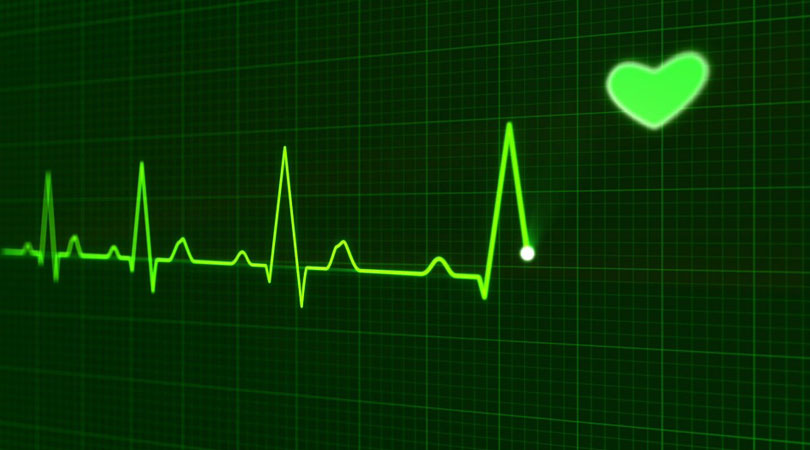
What is an Electrocardiogram Test?
An electrocardiogram is a simple, painless test that measures your heart’s electrical activity. It’s also known as an ECG or EKG. Every heartbeat is triggered by an electrical signal that starts at the top of your heart and travels to the bottom. Heart problems often affect the electrical activity of your heart. Your doctor may recommend an EKG if you’re experiencing symptoms or signs that may suggest a heart problem, including:
- pain in your chest
- trouble breathing
- feeling tired or weak
- pounding, racing, or fluttering of your heart
- a feeling that your heart is beating unevenly
- detection of unusual sounds when your doctor listens to your heart
An EKG will help your doctor determine the cause of your symptoms along with what type of treatment might be necessary.
If you’re 50 or older or if you have a family history of heart disease, your doctor may also order an EKG to look for early signs of heart disease.
An EKG is quick, painless, and harmless. After you change into a gown, a technician attaches 12 to 15 soft electrodes with a gel to your chest, arms, and legs. The technician may have to shave small areas to ensure the electrodes stick properly to your skin. Each electrode is about the size of a quarter. These electrodes are attached to electrical leads (wires), which are then attached to the EKG machine.
During the test, you’ll need to lie still on a table while the machine records your heart’s electrical activity and places the information on a graph. Make sure to lie as still as possible and breathe normally. You shouldn’t talk during the test.
After the procedure, the electrodes are removed and discarded. The entire procedure takes about 10 minutes.
An EKG records a picture of your heart’s electrical activity for the time that you’re being monitored. However, some heart problems come and go. In these cases, you may need longer or more specialized monitoring.
Stress test
Some heart problems only appear during exercise. During stress testing, you’ll have an EKG while you’re exercising. Typically, this test is done while you’re on a treadmill or stationary bicycle.
Holter monitor
Also known as an ambulatory ECG or EKG monitor, a Holter monitor records your heart’s activity over 24 to 48 hours while you maintain a diary of your activity to help your doctor identify the cause of your symptoms. Electrodes attached to your chest record information on a portable, battery-operated monitor that you can carry in your pocket, on your belt, or on a shoulder strap.
Event recorder
Symptoms that don’t happen very often may require an event recorder. It’s similar to a Holter monitor, but it records your heart’s electrical activity just when symptoms occur. Some event recorders activate automatically when they detect symptoms. Other event recorders require you to push a button when you feel symptoms. You can send the information directly to your doctor over a phone line.
However, there are some rare risks, such as:
- Chest pain
- Collapsing
- Fainting
- Heart attack
- Irregular heartbeat
However, your risk of experiencing these reactions during the test is low, since your doctor will screen you for problems beforehand. People who run the risk of these complications — such as those with advanced coronary heart disease — are rarely asked to do the test.
There are few, if any, risks related to an EKG. Some people may experience a skin rash where electrodes were placed, but this usually goes away without treatment.
People undergoing a stress test may be at risk for heart attack, but this is related to the exercise, not the EKG.
An EKG simply monitors the electrical activity of your heart. It doesn’t emit any electricity and is completely safe.
Avoid drinking cold water or exercising before your EKG. Drinking cold water can cause changes in the electrical patterns that the test records. Exercise can increase your heart rate and affect the test results.
You’ll start off by walking slowly on a treadmill. The speed and grade of the treadmill will be increased as the test continues.
If you experience any difficulties — especially, chest pains, weakness, or fatigue — you may ask to stop the test.
When your doctor is satisfied with your results, you’ll be able to stop exercising. Your heart rate and breathing will continue to be monitored for a short while afterward.
If your EKG shows normal results, your doctor will likely go over them with you at a follow-up visit.
Your doctor will contact you immediately if your EKG shows signs of serious health problems.
An EKG can help your doctor determine if:
- your heart is beating too fast, too slow, or irregularly
- you’re having a heart attack or you’ve previously had a heart attack
- you have heart defects, including an enlarged heart, a lack of blood flow, or birth defects
- you have problems with your heart’s valves
- you have blocked arteries, or coronary artery disease
Your doctor will use the results of your EKG to determine if any medications or treatment can improve your heart’s condition.
A few days after the test, your doctor will review the results with you. The test could reveal irregular heart rhythms or other symptoms that indicate coronary artery disease, such as blocked arteries.
If your doctor determines you may have coronary artery disease or other heart problems, they may begin treatments or order more tests, such as a nuclear stress test.



